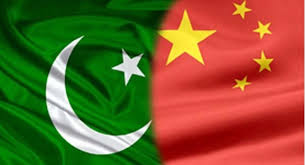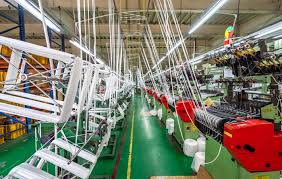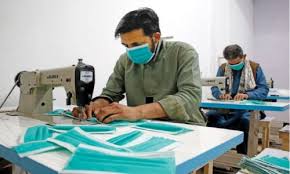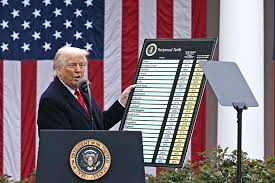China, Pakistan companies cooperate each other in textile sector

Beijing: Both as textile powerhouses, China and Pakistan are cooperating each other to increase business in the textile sector, said some traders who have had years of business dealings with Pakistan.

Pakistani-made coarse yarn delivers good value for money as its advantage in cotton fiber overcomes the weakness of coarse yarn production in China’s cotton mill, said Ke Jiangwei, General Manager of Xiamen Naseem Trade Co., Ltd., a Pakistani company registered in China, which has imported yarn from Pakistan for many years.
Zheng Peipei, General Manager of Haian Jinhong Chemical Fiber Co., Ltd., which has been doing business with Pakistan for 15 years told CEN during recently held 2020 China Textile Joint Exhibition recently held in Shanghai by China National Textile and Apparel Council (CNTAC) that Pakistani buyers mainly purchase yarn, nylon, and polyester.
Specifically, high-count yarns are used for making fabrics and socks; fishing lines are exported to Karachi for fishing nets; skeins are dyed and made into sewing threads before being sold to local factories for making shoes, bags, and suitcases, said Zheng.
“We produce a steady supply of quality goods and export them directly to Pakistan at a price that is at least 10% lower than the market average. That is exactly what the Pakistani market needs,” he added.
Ke, Head of Import and Export Department of Shanghai Eiko Textile Co., Ltd., informed that a “one-on-one” counseling session was specially initiated by the CNTAC to match Chinese exhibitors with potential buyers. Many Chinese exhibitors had face-to-face communication with Pakistani buyers.
“I just talked to a Pakistani buyer and he said that their socks are imported from China,” said Is there any competition between China and Pakistan in the sock-manufacturing industry? Ke replied that socks made in China and Pakistan differ. “There are big customers who have been purchasing from both us and Pakistan. Pakistani products are predominantly coarse woven, while Chinese products are largely made of chemical fiber.”
Xu Leilei, a member of the Sales Department in CHTC Helon (Weifang) New Materials Co., Ltd., said, “We mainly produce viscose staple fiber with an annual production capacity of 200,000 tons, of which about 1,000 tons are exported to Pakistan per month.

We spin yarns into materials, and most of them are exported to Europe and America. Our products are used to make denim, knitted underwear, and also robes for local people.”
Are there any Pakistani producers alike? “Till now, there is no viscose plant in Pakistan. China is producing 80%-90% of the world’s total, with Thailand and Malaysia, etc., taking up a minor share,” said Xu.
Zhou Feiyan, manager of the Marketing Department in LDZ New Aoshen Spandex Co., Ltd., said, “The world’s total capacity of spandex hits around one million tons, of which 70% comes from China. Also, China takes up 70% of the global market, with an annual export revenue totaling 4 million US dollars, while other overseas markets such as South Asia, Europe, and South American countries with advanced textile industries mostly rely on spandex imports.”
When it comes to the cooperation with Pakistan, Zhou said, “We complement each other in the market. Pakistan’s textile market is dominated by denim, a machine-woven fabric based on the core-spun yarn which is made of covered spandex, so spandex becomes a necessity.
As there is no domestic manufacturer, Pakistan imports spandex mainly from China, and also from Vietnam and Turkey. Our products are welcome in Pakistan because they are characterized by high cost-effectiveness, elasticity, and resilience, which are prerequisites for the manufacturing of denim. We export approximately 20 tons of spandex to Pakistan every month.”
From the perspective of Zhou, the Pakistani market is rather promising. “That is because Pakistan is embracing a high-end application of spandex, and its market is witnessing a steady growth underpinned by customer loyalty.
All these features prove to be in tune with our products. Till now, our exports to Pakistan range from dyeable and highly resilient spandex to high-temperature resistant spandex.
In the years to come, spandex with antibacterial, antiviral, mosquito repellent, and TCM-based health-care effect may be welcome there,” she said.
Speaking of the cooperation experience with the iron Pak, Zhou said, it’s of vital importance to build trust because customers from Pakistan would prefer their chosen product if they consider it trustworthy. Besides, spandex may create high value though it only accounts for 5%-10% of the fabrics.
“We also plan to visit the Pakistani market after the Covid-19 epidemic”, Zhou added.Shi Qiwen, a salesperson of Fujian Jinxing Group said, there aren’t many polyester producers in Pakistan. “In front of the producers is a high bar which requires a production capacity amounting to 500,000 or even one million tons, along with hundreds of millions worth of investment”, she said.
Shi said, “Currently, the textile industry is thriving in such developing countries as Pakistan, Bangladesh and Vietnam, which thereby become our main export destinations. We began to export to Pakistan before 2015 with products including polyester filament yarn and polyester chips by about 1,000 tons per month.”





